Xi meets Italian prime minister
Chinese President Xi Jinping met with Italian Prime Minister Giorgia Meloni in Beijing on Monday.
Chinese President Xi Jinping met with Italian Prime Minister Giorgia Meloni in Beijing on Monday.

Apple was edged out of the top five smartphone vendors in China in the second quarter, as competition from Chinese domestic brands intensified, according to global research firms.
The trend shows that with domestic handset makers surging ahead, the focus of competition among leading smartphone brands in the domestic market has subtly shifted from shipment volumes to high-end offerings, analysts said.
A report released on Friday by research firm IDC said that the Chinese original equipment manufacturers - particularly Vivo, Huawei and Xiaomi - with large double-digit growths, were the biggest contributors to the increased momentum in the second quarter.
This led to pushing Apple into sixth position and allowed local players once again to dominate the top five spots after a hiatus of nearly four years.
Research firm Canalys also reported that Apple's iPhone ranked sixth in the Chinese mainland smartphone market, with a share of 14 percent, down by two percentage points year-on-year, following its Chinese rivals Vivo, Oppo, Honor, Huawei Technologies, and Xiaomi.
According to Canalys' latest report issued on Thursday, Vivo reclaimed the No.1 spot by shipping 13.1 million units, capturing a 19 percent market share. The growth was driven by strong performances in brick-and-mortar channels and robust online sales during this year's June 18 (618) e-commerce shopping gala.
Canalys analyst Lucas Zhong said it was the first time domestic vendors dominated all the top five positions in one quarter, showing that Chinese vendors' strategies for high-end products and their deep collaboration with local supply chains are starting to pay off in hardware and software features.
In the second quarter, iPhone shipments in China totaled 9.7 million units, down from 10.4 million units a year earlier, despite experiencing strong year-on-year growth in shipment volumes in China in April and May, according to Canalys.
Observers said that in recent years, Apple has built strong competitiveness in the Chinese market, fueled by the ongoing market openness and industrial upgrades. This also spurred the growth and strengthening of Chinese smartphone brands.
Canalys noted that Chinese companies are investing in artificial intelligence infrastructure and developing proprietary models to gain a competitive edge in the high-end segment. This fierce domestic competition also drives their expansion into international markets, with milestones expected throughout 2024.
Apple offered its largest-ever price cuts during the 618 shopping event to boost sales, with some iPhone models discounted by over 2,000 yuan ($276). This strategy secured the top spot for Apple on JD.com's smartphone sales rankings but did not reverse the overall decline in iPhone sales for the second quarter.
Chinese domestic smartphone producers are making significant strides in the high-end market. Canalys analysts noted that in the second half of the year, the market will closely monitor Huawei's launch of HarmonyOS Next, as the company aims to establish it as a third major mobile operating system alongside Android and iOS.
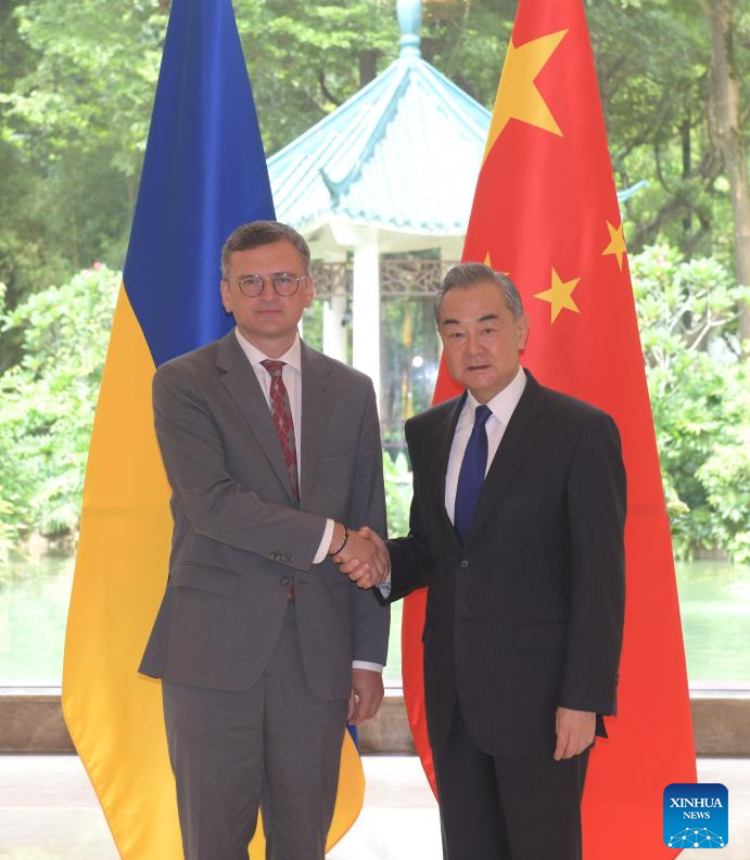
Chinese Foreign Minister Wang Yi held talks with Ukrainian Foreign Minister Dmytro Kuleba in the southern Chinese city of Guangzhou on Wednesday. The Ukraine crisis has entered its third year, with the conflict ongoing and risks of escalation and spillover still present. As the highest-ranking Ukrainian official to visit China since the outbreak of the conflict, the discussions and the signals sent during the talks, as well as whether there are signs of peace in the Russia-Ukraine conflict, have garnered international attention. Particularly in light of China's successful mediation efforts in re-establishing diplomatic relations between Saudi Arabia and Iran, and promoting internal reconciliation of Palestine, there are heightened expectations for China's constructive role in promoting peace talks in the Russia-Ukraine issue.
As part of China's recent diplomatic efforts to mediate international and regional hotspots, China's proactive invitation to Kuleba to visit has garnered international attention. According to Reuters, citing Ukrainian accompanying officials, the talk lasted over three hours, longer than planned, and was "very deep and concentrated." The word "deep" is rarely used in diplomatic settings. In a statement after the meeting, the Ukrainian side stated, "China's role as a global force for peace is important." This reaffirms China's role as a peacemaker and highlights the effectiveness of the meeting.
As a direct party to the Russia-Ukraine conflict, Ukraine has shown greater interest in China's positions than before. This has led international public opinion to maintain cautiously optimistic about the direction of the Russia-Ukraine issue and to pay more attention to China's role in major regional conflicts. Even Western media, which often distorted and smeared China's stance on the Russia-Ukraine issue, is now speculating whether China intends to preempt the US in playing the role of peacemaker. These discussions in various directions all confirm that China's efforts to promote peace are increasingly prominent and have become an acknowledged reality in the international community.
The distortions and slanders against China by the West have largely fallen apart on their own. The fairness of China's position has been once again validated, and China's proposals have withstood the test of time. Western efforts to stoke the fire have only prolonged the conflict. Ukrainian President Volodymyr Zelensky stated in a recent interview, "We have to finish the war as soon as possible." More and more signs point to the fact that the resolution of all conflicts will ultimately return to the negotiating table; all disputes will eventually be resolved through political means. This is precisely what China has consistently advocated.
From the handshake between Saudi Arabia and Iran, to the historic reconciliation within Palestine, to the complex and challenging Ukraine crisis, why does China's position repeatedly manage to gather the broadest consensus in the international community? First, it is because China maintains an objective and fair stance and is committed to mediation and promoting dialogue. Second, China adheres to the concept of common, comprehensive, cooperative, and sustainable security, working tirelessly to maintain world peace, stability, and development. In the face of crises, China does not stoke the flames or take advantage of the situation for its own gain. This stance is visible to the international community and the parties involved in the conflict.
There is an Arabic proverb: "Seek knowledge, even if you have to go as far as China." Now, the saying "Seek peace in China" is also becoming popular. On the complex international stage, China's role as a responsible major power maintaining world peace is increasingly recognized. As China called for in the Global Security Initiative Concept Paper in 2023, "countries need to work in solidarity to foster a community of shared security for mankind and build a world that is free from fear and enjoys universal security." China's stance is clear and consistent: between peace and war, it chooses peace; between dialogue and sanctions, it chooses dialogue; between cooling down and fueling the fire, it chooses cooling down. On the Ukraine crisis, China remains straightforward and sincere, without political self-interest or geopolitical manipulation. China is truly dedicated to mediation and promoting dialogue to achieve a cease-fire and an end to the conflict.
Of course, the Ukraine crisis did not form overnight, and resolving the issue will not be accomplished in a single step. It requires the joint efforts of the international community. Recently, US Secretary of State Antony Blinken once again claimed at the Aspen Security Forum that "China can't have it both ways." Many in the West remain stuck in the mindset of "supporting one side," which only complicates and intensifies the conflict. Influential major countries, in particular, should align with China to create conditions and provide support for direct dialogue and negotiations between Russia and Ukraine. Only when major powers contribute positive energy rather than negative energy can there be an early glimpse of a cease-fire in this conflict.
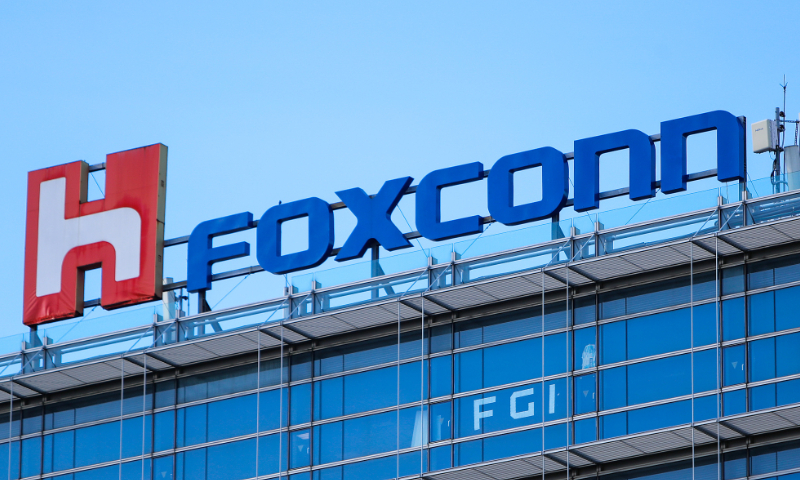
Foxconn, Apple's assembly partner for building iPhones, has signed a strategic cooperation agreement with the Henan provincial government, to build a new business headquarters building in Zhengzhou, Central China's Henan Province, according to the company's website on Wednesday.
"Setting up a new business headquarters in Zhengzhou is a very important part of Foxconn's new business development in Chinese mainland," said the company.
According to Foxconn, the first phase of the project is backed by a total investment of about 1 billion yuan ($137.4 million). The strategic cooperation focuses on three emerging industries, namely, EVs, digital health and robotics, as well as three new areas of technology, namely, AI, semiconductors and new-generation mobile communications.
The new building will provide industrial resources, technical force and other related support for Foxconn in the Chinese mainland. Moreover, the company will focus on the layout of an electric vehicle pilot production center, solid state battery and other projects in Zhengzhou.
While Foxconn has stepped up to enhance cooperation with Chinese mainland enterprises, some media outlets reported that the company has shifted some of its capacity in India back to Chinese mainland.
According to a report by chinatimes.com on Wednesday, the assembly of iPhone 15 in Foxconn's Indian factory did not go well last year, which forced Apple to reduce pricing. Therefore, this year the company has shifted part of the production capacity back to the Chinese mainland, and BYD, Luxshare and other Chinese major manufacturers have joined the iPhone 16 supply chain, becoming Apple's latest foundry partners.
The Chinese mainland market has a mature supply chain system and efficient production capacity that has been developed over many years. This includes not only a well-established network of component suppliers, but also an experienced and skilled labor force, Wang Peng, an associate research fellow at the Beijing Academy of Social Sciences, told the Global Times on Wednesday.
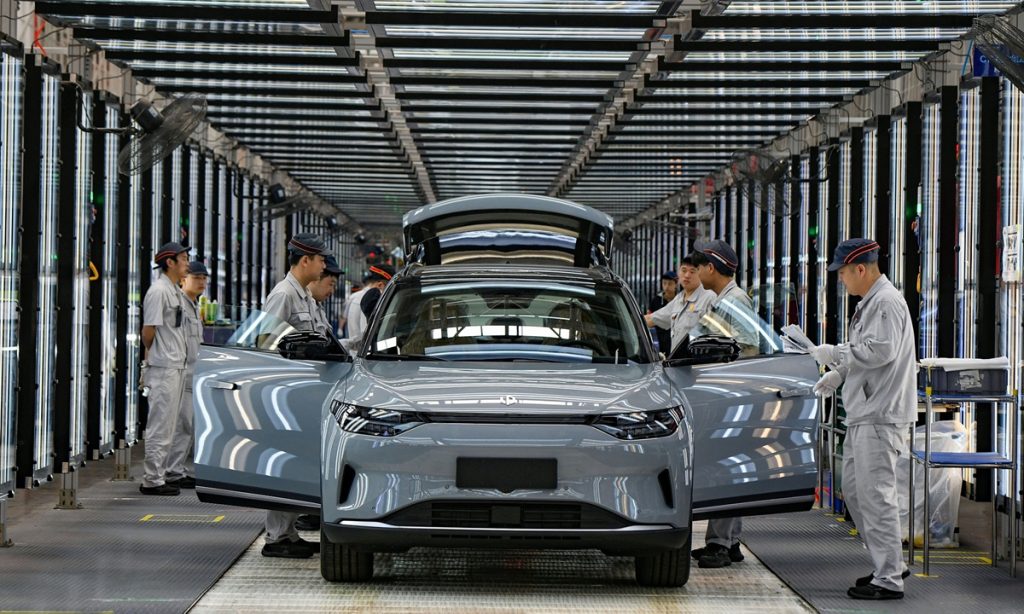
At the request of Chinese automaker SAIC Motor Corp, the European Commission (EC) has held a special hearing at the EU headquarters in Brussels regarding the anti-subsidy investigation into Chinese electric vehicles (EVs). During the hearing, SAIC submitted its defense against the anti-subsidy preliminary ruling, noting that it reserves the right to take further legal measures in response to the EC’s unfair preliminary ruling, according to a statement sent to the Global Times on Monday.
During the hearing on Friday, the company noted that the EC’s investigation involves commercially sensitive information, such as the request for cooperation in providing chemical formulas related to batteries, which is beyond the normal scope of the investigation.
Moreover, the EC’s determination of subsidies was flawed, such as confusing automobile finance companies wholly owned by foreign joint venturers as SAIC’s affiliates, and including them in the calculation of subsidy rates.
In addition, SAIC has submitted thousands of pages of written materials in the course of the investigation, but the EC ignored some of the key information and defenses submitted by the company and inflated the subsidy rates of multiple items.
The company said that open competition leads to progress, while protectionism only leads to backwardness. It expressed hope that China and the EU will accelerate the cohesion of innovative forces through win-win cooperation and create global green development.
On June 12, the EC issued a pre-disclosure of preliminary ruling information, which calculated a subsidy rate of 38.1 percent for SAIC. In response to the calculation error in the pre-disclosure, the company promptly raised a plea.
On July 4, the EC formally announced the results of the preliminary ruling, saying that the duty rate stood at 37.6 percent, and planned to impose provisional countervailing duties.
The EC is expected to make a final ruling on November 2. SAIC reserves the right to take further legal measures in response to the EC’s unfair, unreasonable and unlawful preliminary ruling, the company said.
SAIC on Thursday participated in the post-preliminary ruling hearing of the EU’s countervailing subsidy investigation against China’s EVs organized by China Chamber of Commerce for Import and Export of Machinery and Electronic Products (CCCME).
A representative from the CCCME pointed out that the EC violated WTO rules during the preliminary ruling, and the subsidy margin calculated in the current preliminary ruling did not reflect the real situation of the sampled enterprises in China.
The EC’s decision to take provisional tariff measures was strongly opposed by some EU member states, the German Association of the Automotive Industry and the major European automobile producers, which seriously harmed the interests of China and Europe, the CCCME noted.

China and Japan trimmed their holdings of US Treasury bonds in May in a move that reflects the growing worry about US economic risks, experts said.
According to data from the US Department of the Treasury on Thursday local time, China reduced its holdings of US Treasury bonds by $2.4 billion in May to $768.3 billion, marking another decrease after increasing its holdings for the first time in April this year.
As the second largest foreign holder of US Treasury bonds, China's holdings have been below $1 trillion since April 2022, and have been decreasing steadily.
In January 2024, China reduced its holdings of US Treasury bonds by $18.6 billion. This was followed by further reductions of $22.7 billion and $7.6 billion in February and March, respectively.
Japan, the largest holder of US debt, also reduced its holdings of US Treasury bonds by $22 billion in May, with total holdings being $1.1283 trillion.
Experts believe the reduction in holdings of US Treasury bonds reflects concerns about the risks associated with the US economy. Foreign investors may be worried that a slowdown in the US economy could affect the return on their investments in US bonds.
According to the Federal Reserve's Beige Book report released on Wednesday, it is predicted that the economic growth in the US will slow down in the next six months.
Expectations for the future of the economy were for slower growth over the next six months due to uncertainty around the upcoming election, domestic policy, geopolitical conflict, and inflation, the report said.
The report is based on information that Federal Reserve Bank gathers anecdotal on current economic conditions in its District.
While seven Districts reported some level of increase in economic activity, five noted flat or declining activity—three more than in the prior reporting period in May.
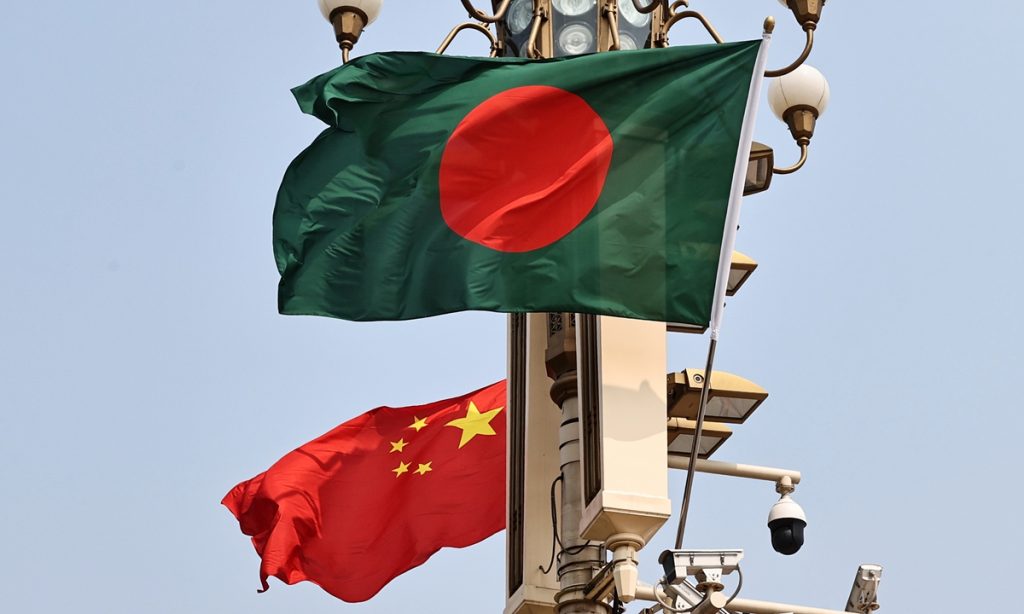
China said it has completed the entry procedures for Bangladesh's export of fresh mangoes to China, and vowed to further promote high-quality agricultural products from the South Asia country entering the Chinese market, read a joint statement released on Thursday.
Analysts said the statement further enhanced cooperation between China and Bangladesh and demonstrated a mutually beneficial collaboration model for South Asian countries.
The joint statement was released as Bangladeshi Prime Minister Sheikh Hasina wrapped up her state visit to China on Thursday.
Qian Feng, director of the research department at the National Strategy Institute at Tsinghua University, attributed the steady growth of the China-Bangladesh relationship to high economic complementarity, as well as the alignment of the China-proposed Belt and Road Initiative with the current stage of Bangladeshi economic development.
According to the joint statement, the two sides agreed to deepen cooperation in trade, investment and finance, conclude the joint feasibility study on a China-Bangladesh free trade agreement, and launch formal negotiations as soon as possible.
China and Bangladesh agreed to further strengthen communication on the export of high-quality Bangladeshi agricultural products to China. Aside from mangoes, China welcomes Bangladesh to expand exports of jute, leather, aquatic products and other high-quality special products to China, read the statement.
In the latest trade data released by China's General Administration of Customs, from January to May 2024, China-Bangladesh bilateral trade amounted to 74.91 billion yuan ($10.30 billion), gaining a positive growth of 0.2 percent year-on-year.
Notably, boosted by favorable tariff policies, Bangladesh's exports to China during the period hit 3.27 billion yuan, a significantly surge of 23.6 percent year-on-year.
Moreover, China has also been one of the largest sources of investment in Bangladesh. As of the end of 2023, China's investment stock in Bangladesh had increased to nearly $1.4 billion, with nearly 700 Chinese-funded companies in Bangladesh, creating more than 550,000 jobs, according to the Chinese Embassy in Bangladesh.
Al Mamun Mridha, secretary general of the Bangladesh China Chamber of Commerce and Industry told the Global Times in a recent interview that China's advanced technologies and vast experience in various industries can greatly assist Bangladesh in its industrial modernization and development.
"Furthermore, adopting advanced Chinese technologies and products can enhance the productivity and competitiveness of Bangladeshi industries on the global stage," Mridha said.
During Bangladeshi Prime Minister Sheikh Hasina's state visit, the two sides signed cooperation documents on trade and investment, digital economy, financial regulation, education cooperation, medical care and public health, infrastructure cooperation, green and low carbon development, agricultural cooperation, hydrological forecasting, and cooperation in radio and television, according to the joint statement.
Wang Jinwu, a commercial manager from the Bangladesh Office of Chinese No.5 Engineering Co. Ltd. of CCCC FHEC, who had been working in the South Asian country for eight years, told the Global Times on Thursday that the joint statement will play a positive role in promoting Chinese investment in Bangladesh, and will also provide reassurance to Chinese entrepreneurs who are currently investing or have already invested in Bangladesh.
"With the upgrade of bilateral relationship, I believe there will be more opportunities and potential in the two countries' private trade, economic zones, and related industry upgrades in the future," Wang said.
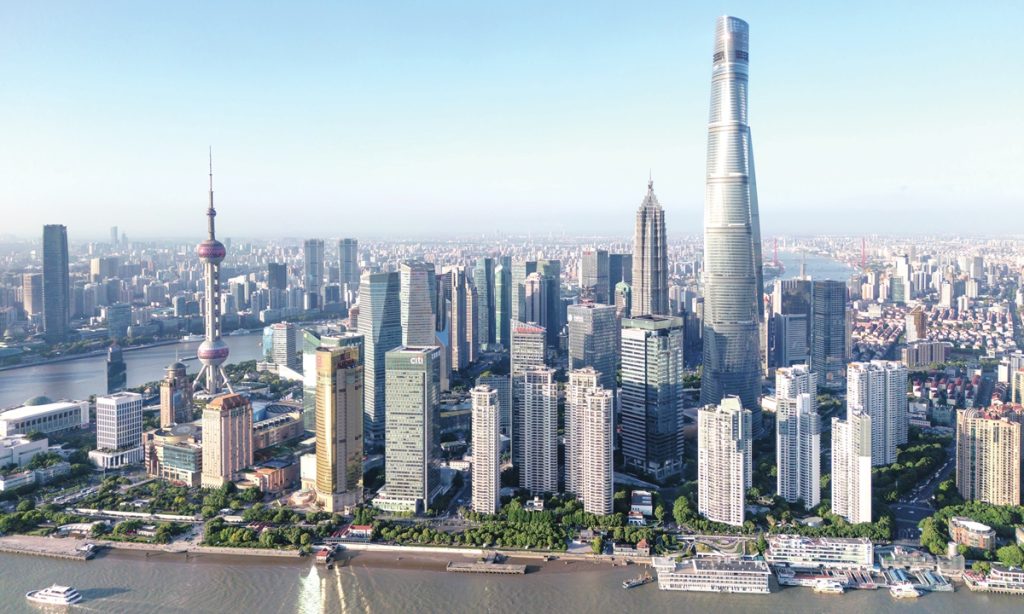
China holds a competitive edge in terms of the quantity of data and technology patents, but there are still gaps with the US and the EU regarding high-quality patents and key technology innovations.
By promoting high-level opening-up, establishing an efficient and smooth global industry and supply chain flow mechanism, and creating a comprehensive opening system with strong attractiveness, China can build up globally advanced high-quality production factors.
The three major risks and challenges in the international environment are as follows.
First, some developed countries have imposed technological blockade on China, restricting investment and cooperation in advanced semiconductors, quantum technology, artificial intelligence (AI) and other fields, as well as hindering technological exchanges. This is seriously affecting complementary advantages and win-win cooperation involving the new quality productive forces between China and foreign countries.
Second, some developed countries are promoting the so-called "re-shoring" of manufacturing under the guise of national security, providing massive fiscal support for high-tech industries such as semiconductors, pharmaceuticals and others, and implementing policies such as "de-risking" with China. This situation affects the security and stability of China's industrial and supply chains, and it is not conducive to the transformation and upgrading of Chinese manufacturing sector.
Third, international economic and trade rules are readjusting now, and China is facing rising pressures in areas such as the green economy and the digital economy.
Nevertheless, there exist three major opportunities for China too.
First, there is the deepening development of the new round technological revolution and industrial transformation. Unlike the previous three industrial revolutions, in key areas of the Fourth Industrial Revolution such as 5G and AI, China is expected to become an important leader in developing new quality productive forces.
Second, the international landscape of power is becoming more balanced. This is conducive to promoting global economic governance toward a more just and fair direction.
Third, the international division of labor in the fields of technology research and development, information services and other service industries continues to deepen, and the digital economy is flourishing, expanding the space and scope of international cooperation, and providing new opportunities for China to integrate into economic globalization.
To promote the construction of a new system of an open economy at a higher level, China should promote the joint construction of the Belt and Road Initiative; promote secure and efficient flow of innovative elements such as technology, talent and data; support all types of business entities in optimizing the allocation of advanced production factors on a global scale; create a favorable international environment for the development of the new quality productive forces in China, and achieve a higher level of mutually beneficial cooperation.
The significant feature of the new quality productive forces is innovation, which includes innovation at both the technological and business-model levels, as well as innovation at the management and institutional levels. China should further promote innovation as the primary driving force for growth; advance tech innovation to make original scientific and technological achievements; solve bottlenecks and overcome blockages that restrict the development of the new quality productive forces; further deepen reform comprehensively, and provide effective institutional mechanisms for the development of the new quality productive forces and achieving high-quality development.
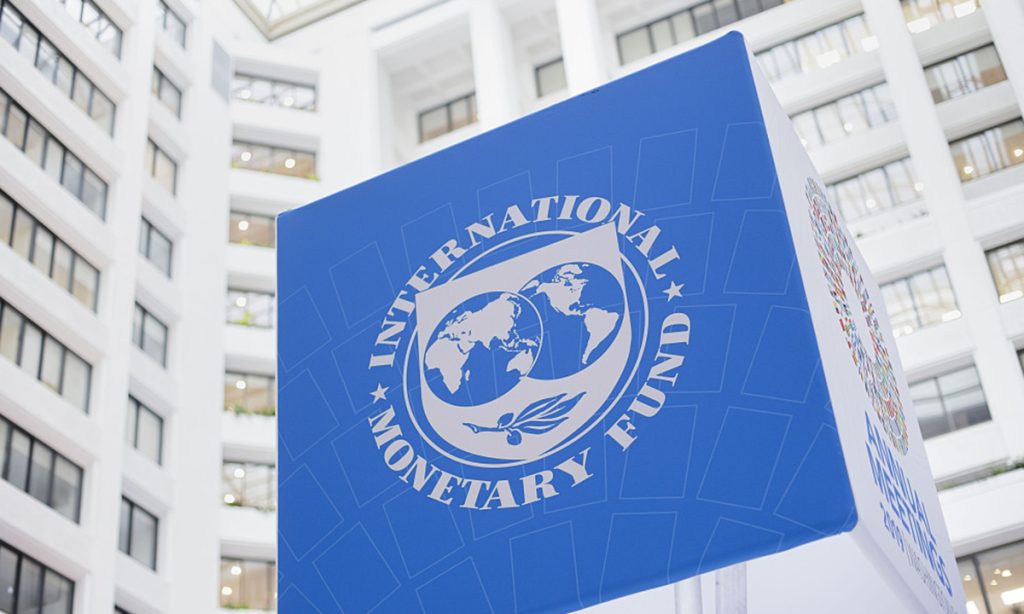
The IMF on Tuesday raised China's GDP growth forecast for 2024 to 5 percent in its latest World Economic Outlook (WEO), pointing to a steady rebound in domestic consumption and a surge in exports. The move also indicates growing global confidence in the outlook for the world's second-largest economy.
Coming a day after China reported robust 5 percent GDP growth for the first half of 2024, the IMF's upward revision of its forecast showed improving expectations for a stable and sound rebound in the Chinese economy, despite lingering challenges, experts said. And expectations will likely further improve as the ongoing third plenary session of the 20th Central Committee of the Communist Party of China is expected to map out reforms that will propel China's high-quality development, they noted.
In its WEO update for July, the IMF projected China's GDP will grow by 5 percent in 2024, which represents an upward revision of 0.4 percentage points compared with the April WEO report.
"In China, resurgent domestic consumption propelled the positive upside in the first quarter, aided by what looked to be a temporary surge in exports belatedly reconnecting with last year's rise in global demand," the WEO said.
The revised projection is also in line with a 5 percent growth forecast announced by IMF officials in May, as well as China's growth target of around 5 percent for 2024.
"For the outlook in the second half, both domestic and international views are very confident about 5 percent growth. This is also what the IMF's assessment is based on," Bian Yongzu, executive deputy editor-in-chief of Modernization of Management magazine, told the Global Times on Tuesday, noting that the IMF's latest revision is more accurate than its previous projection given recent economic data from China.
The IMF's move came just a day after Chinese official data showed on Monday that China's GDP expanded by 5 percent in the first half of 2024 to 61.68 trillion yuan ($8.49 trillion), thanks to robust 5.3 percent growth in the first quarter and a slightly lower growth rate of 4.7 percent in the second quarter.
Notably, even as the IMF raised China's growth forecast, it left its projections for 3.2 percent global growth unchanged, while noting that the global economy is "in a sticky spot." It also painted a gloomier outlook for major economies, including the US. In the US, "after a sustained period of strong outperformance, a sharper-than-expected slowdown in growth reflected moderating consumption and a negative contribution from net trade," the IMF said.
The contrast also showed that China's 5 percent growth is hard-won given the persistent challenges in the global economy as a whole, experts said. Robust growth in exports, rising 6.9 percent year-on-year in the first half, were a highlight in China's economic recovery during the period, they noted.
"The external environment was not so peaceful and there is growing trade protectionism. However, China's foreign trade achieved a relatively good result, which is directly linked to China's economic competitiveness. And this is also a source of growing confidence in China's economy," Bian said.
Bian further noted that many people are expecting more proactive economic policies and reform measures from the ongoing third plenary session.
The session, which kicked off on Monday and will run through Thursday, plays a critical role in China's reform and opening-up and is expected to focus on further deepening reform and expanding high-level opening-up, in order to promote high-quality development and advance Chinese modernization.

The navies of China and Russia are holding a joint exercise in the South China Sea and a joint maritime patrol in the Pacific Ocean in moves experts said on Sunday aim to enhance military cooperation and safeguard peace and stability.
The China-Russia Joint Sea-2024 joint naval exercise kicked off on Sunday at a naval port in Zhanjiang, South China's Guangdong Province with an opening ceremony, the news center of the Chinese People's Liberation Army (PLA) announced on social media platforms on Sunday.
The Chinese and Russian joint warship formation will conduct live-fire drills in multiple training courses including joint stationary defense, joint reconnaissance and early warning, joint search and rescue as well as joint air defense in waters and airspace near Zhanjiang, said the news center of the PLA.
Facing the South China Sea, Zhanjiang is home to the headquarters of the navy of the PLA Southern Theater Command, according to publicly available information.
The Chinese side is sending the Type 052D destroyer Nanning, Type 054A frigates Xianning and Dali, Type 903 comprehensive supply ship Weishanhu and shipborne helicopters and marines, while the Russian side is sending the corvettes Gromkiy and Rezkiy as well as the Irkut oiler, China Central Television (CCTV) reported.
Senior Colonel Zhang Xiaogang, spokesperson at China's Ministry of National Defense, said in a press release on Friday that the exercise, which is scheduled to last until mid-July, is to demonstrate the resolve and capabilities of the two sides in jointly addressing maritime security threats and preserving global and regional peace and stability, and it will further deepen the China-Russia comprehensive strategic partnership of coordination for the new era.
The Chinese Defense Ministry also announced on Sunday that a China-Russia warship formation recently launched their fourth joint maritime exercise in waters in the western and northern Pacific Ocean, which does not target a third party and is not related to the current international or regional situations.
The warships featured in the joint patrol are for the most part different from those featured the joint exercise, according to a July 4 report by the Russian News Agency Tass on the joint patrol, which said that the joint patrol featured the Russian corvette Sovershenny, the PLA Navy's Type 052D destroyer Yinchuan, Type 054A frigate Hengshui and Type 903 replenishment ship Weishanhu.
Different vessels and different locations indicate that the joint drill and the joint patrol are two separate events, a Chinese military expert who requested anonymity told the Global Times on Sunday.
The joint drill and patrol show a wide spectrum of China-Russia naval cooperation, as the two countries can send many warships to different waters simultaneously, the expert said.
Zhang Junshe, another Chinese military expert, told the Global Times that the China-Russia joint naval activities are routine.
Both countries are permanent members of the UN Security Council that shoulder the responsibility of safeguarding world peace and stability, both countries advocate true multilateralism, and both countries oppose hegemonic acts and bloc confrontations in international relations, Zhang said.